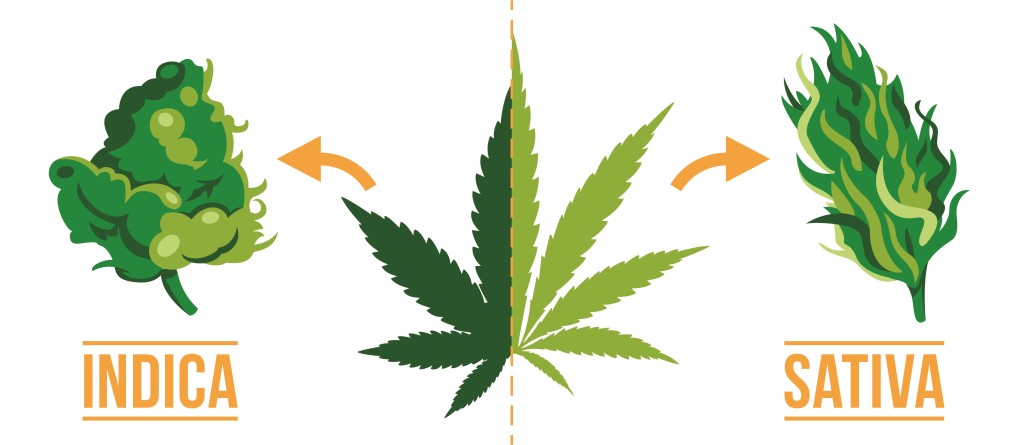Cannabis Sativa:
Origins:
Cannabis sativa is believed to have its origins in equatorial regions, mainly in areas of South America, Africa, and Asia.
History:
The earliest evidence of human use of cannabis sativa dates back thousands of years. Ancient civilizations in Central Asia, such as the Chinese and Indians, utilized the plant both for medicinal purposes and textiles.
Cannabis Indica:
Origins:
Cannabis Indica originated in mountainous and arid regions of Central Asia, such as Afghanistan, Pakistan, India, and surrounding areas.
History
Indica has been used for centuries in these regions for its medicinal and recreational properties. Its cultivation has been focused on resin production, used to make hashish and other concentrated products.

Over the centuries, the mixing and cultivation of these two varieties have spread worldwide, generating an extensive range of hybrid strains. Today, cannabis has solidified its position as one of the most cultivated and consumed plants globally, with notable versatility spanning from industrial, medical, to recreational uses. We explain the major differences between these 2 specimens:
Cannabis Sativa:
- Botanical characteristics: Cannabis sativa tends to grow taller and thinner compared to the Indica variety. Its leaves are finer and elongated, with a generally more spacious structure.
- Typical effects: Sativa strains tend to produce more stimulating and cerebral effects. Many users describe their effects as energizing, creative, and euphoric. They are popular for daytime use due to their ability to enhance focus and creativity.
- Terpene profile: Sativa varieties often have a terpene profile that includes terpinolene, limonene, and pinene, among others. These aromatic compounds may contribute to the effects and distinctive aroma of sativa strains. Traditionally, sativa varieties are believed to have higher levels of THC (the psychoactive cannabinoid).
Cannabis Indica:
- Botanical characteristics: Cannabis Indica tends to be shorter and bushier compared to Sativa. Its leaves are broader and thicker, with a more compact and dense structure.
- Typical effects: Indica strains typically produce more relaxing and sedating effects on the body. Many users find them useful for relieving stress, insomnia, and chronic pain. They are popular for nighttime use due to their ability to induce relaxation and sleep.
- Terpene profile: Indica varieties often have a terpene profile that includes myrcene, caryophyllene, and humulene, among others. These terpenes can contribute to the calming effects and the typical earthy or fruity aroma of Indica strains. Indicas have higher levels of CBD (cannabidiol, a non-psychoactive cannabinoid).
Hybrids:
- Many cannabis strains in the current market are hybrids, meaning they are the result of crossbreeding between Sativa and Indica varieties. These hybrids can offer a unique combination of effects and characteristics, which can vary depending on the specific genetics of the strain.
- Breeders often create hybrids to harness the best of both varieties, either to achieve a balance between cerebral and bodily effects or to enhance certain characteristics such as flavor, yield, or disease resistance.
Importance of individual needs and preferences when selecting a strain:
- While the distinction between Sativa and Indica can be useful as a starting point, the chemical composition and effects of a specific strain can vary widely.
- Genetics, cultivation, processing, and storage can significantly affect the cannabinoid and terpene profiles of a strain, influencing its flavor, aroma, and effects.

Understanding the distinction between Cannabis sativa and Indica varieties can help users choose strains that best suit their needs and preferences. However, it is important to remember that individual experience may vary depending on factors such as tolerance, sensitivity, and consumption environment. It is always advisable to experiment with moderation and consult a healthcare professional if there are medical concerns.











